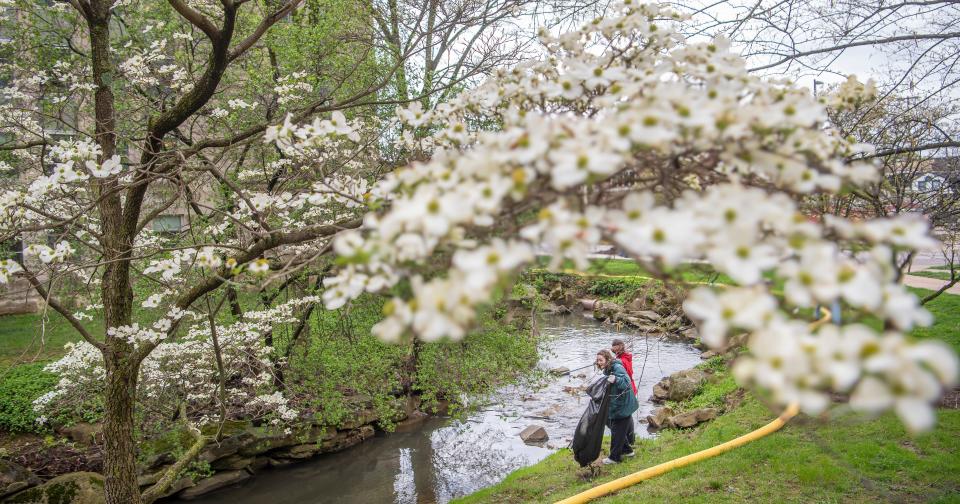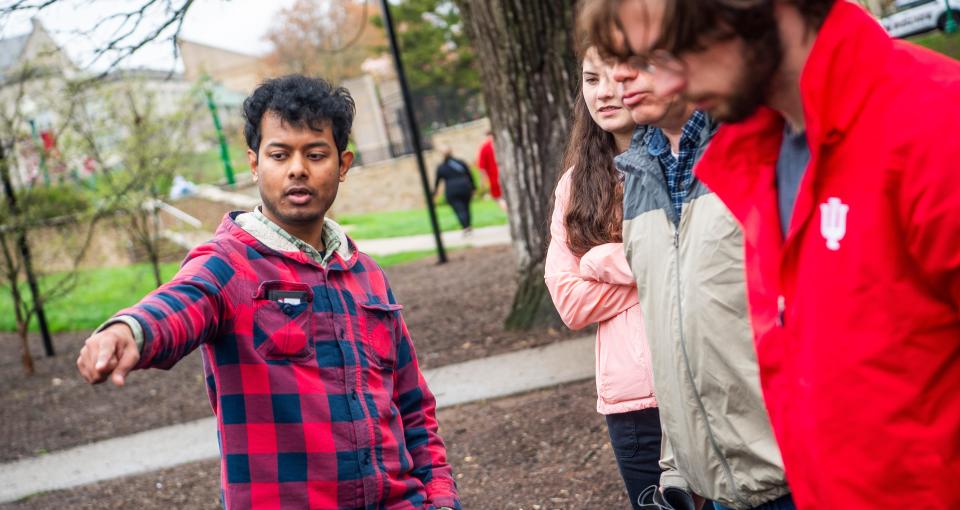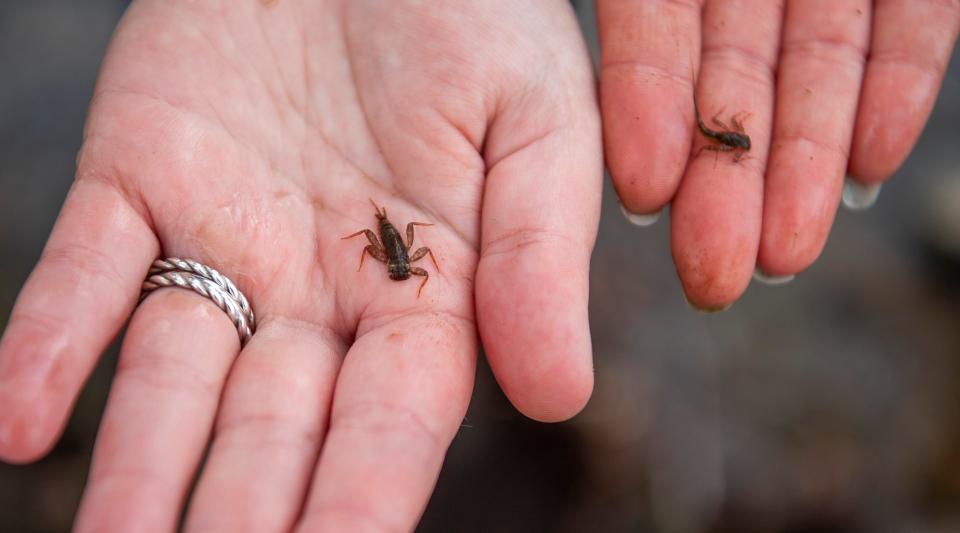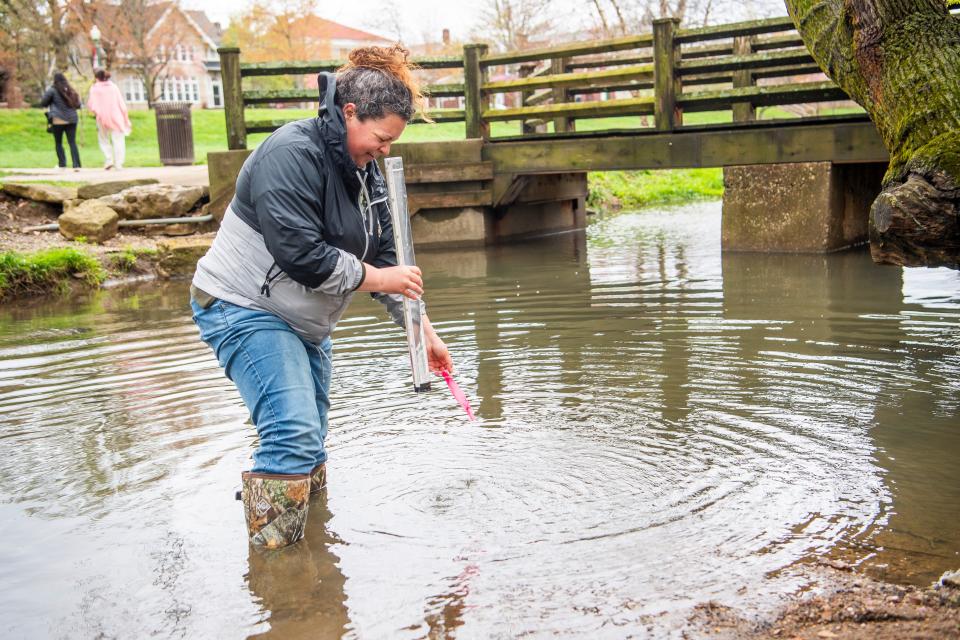Campus River Cleanup at Indiana University tests pH levels, looks for macroinvertebrates
Indiana University student Joey Rotelli donned sandals and knit gardening gloves as he picked up strands of wrappers, cigarette butts and plastic cup lids from the Campus River near the Indiana University Auditorium.
He was pleasantly surprised.
“Honestly, this is a lot cleaner than last year,” Rotelli said. “I assumed it was going to be filled galore.”

It was his third time volunteering for the Campus River Cleanup, an annual, volunteer-run collaboration between the Indiana University Office of Sustainability and the City of Bloomington and Monroe County Stormwater programs. But this year, volunteers also collected sampling data like pH levels and turbidity (the measure of particles or “haziness” in a fluid) to glean scientific insights about one of Bloomington’s urban creeks.
The Campus River, part of the larger White River that flows southeast through Bloomington and travels underground via a culvert through downtown Bloomington, is particularly prone to runoff and pollution as one of the lowest points on campus and its location right outside of the IMU, where several IU dining options are located.

Tanjimul Alam, a graduate student and member of the IU Office of Sustainability, said the river cleanup provides invaluable input into the ecological health of the campus and its impact on the local environment.
“What you see in the river is sort of a signal for other things,” Alam said. “A lot of different measures of how sustainable IU is can be seen through the river.”

During the event, volunteers scoured the river for litter (some volunteer-found favorites were a plastic stegosaurus and a toy doll displaced from a display upstream), tested strips for pH levels and used macroinvertebrate sampling nets to assess the health of the creek.
By studying health indicators like turbidity and the animal population in the river (insects like the mayfly nymph, for example, are rarely found in heavily-polluted bodies of water), Alam said researchers can determine the health of the Campus River and its potential impact on plants and animals in the surrounding ecosystem.

“We’re basically doing some detective work,” Alam said. “There’s a portion of trees around here that are in poor health, and we’re interested in seeing if there’s something with the water, maybe with a utility pipe, and these samples might be able to tell us that.”
Data collected from the cleanup event was submitted to Hoosier Riverwatch, a program of the Indiana Department of Environmental Management that seeks to educate Hoosiers about watersheds and the interplay between land use and water health through volunteer events, training and community-sourced data.

Kriste Lindberg, an environmental education specialist for the City of Bloomington, said the event was an important opportunity for collaboration between IU and city and county government.
“It’s really neat to see jurisdictions working together for mutual benefit,” Lindberg said. “The things we learn today can benefit all of us.”
Alam said the hands-on data collection was inspired in part by a graduate-level chemistry course previously offered at IU that worked with Hoosier Riverwatch to analyze local waterways. The course was suspended during the height of the COVID-19 pandemic and has yet to return as an offering at IU.
“So we had a unique opportunity here to continue some of that history and help inform better choices on campus,” Alam said.
Reach Brian Rosenzweig at heraldt.com.
This article originally appeared on The Herald-Times: IU students sample Campus River water while cleaning up litter

